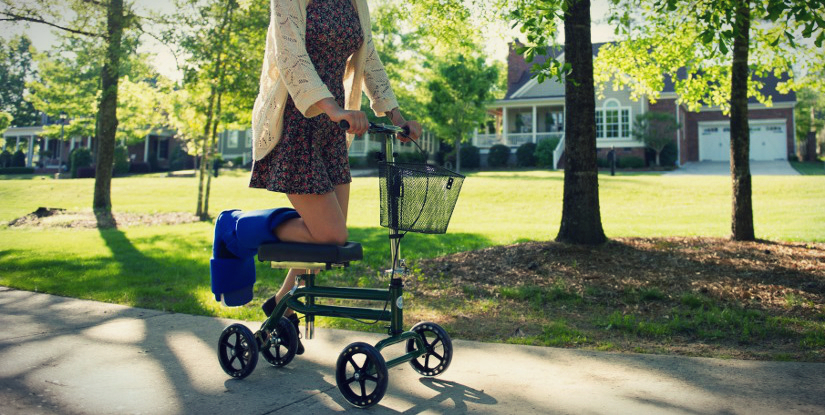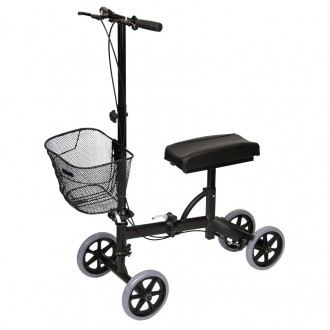 Knee Health
Knee Health
A broken ankle or foot places a particularly troublesome burden on a person. Generally, you’re in a cast which limits mobility. Crutches have traditionally been the go-to mobility aid, and if you’ve even used crutches you know – it really slows a person down. There is another option: knee walkers (also called knee scooters).
Knee walkers can come in a few different configurations, however they all have a few key features in common. First, there a padded platform for the user to rest her knee. Next, every knee walker includes flat handle bars; the holds on to the handle bars to control the knee walker. Finally, all knee walkers have wheels to make the whole thing go. You may also see a basket for your stuff, bicycle-style handbrakes, different wheel sizes, and some even include a steerable front wheels.

Using a knee walker is simple and intuitive. Grab the handle bars and steady yourself. Next, place your knee, the one with the injury below it, on the padded platform. Take a look good look around and be aware of your surroundings. Finally, push off with your free foot. And that’s it, you’re off and rolling.
Keen Walker Benefits
- Knee walkers make it painless to get around, especially compared to crutches. Knee walkers free up your hands and your good leg does the work.
- When you’ve sustained a foot or ankle injury, it’s important that you keep the weight off your injured foot or ankle. A knee walker allows you to rest your knee on a comfortable pad, which supports your body’s weight.
- A knee walker minimizes the chances that you will re-injury your foot or ankle – getting around on crutches is awkward and requires good balance.
- Knee walkers allow you to move around in your home or office regardless of flooring material. Knee walkers are built to be stable, a misplaced rug will not take you down.
- Transferring into shower or onto a toilet is an earlier proposition off of a knee walker.
- No sore armpits while using a knee walkers.
- Knee walkers are simple, perhaps even fun to use.
